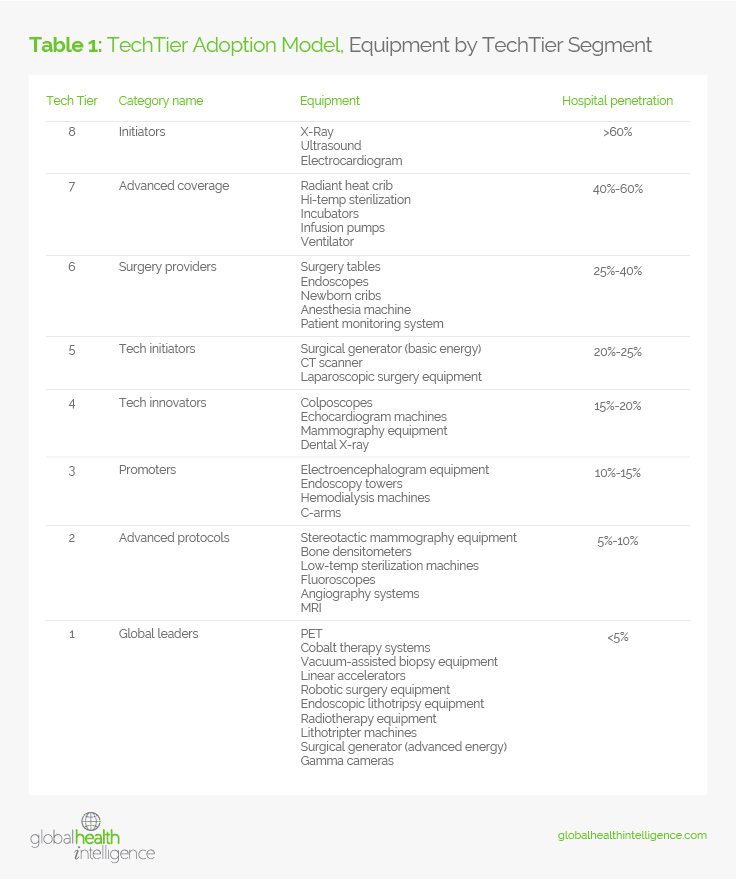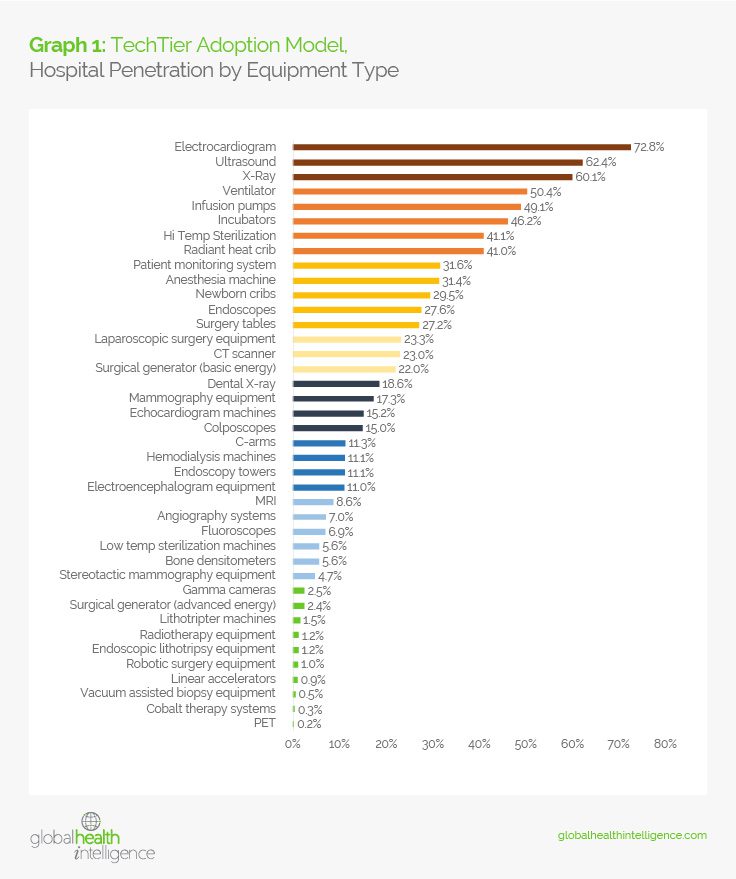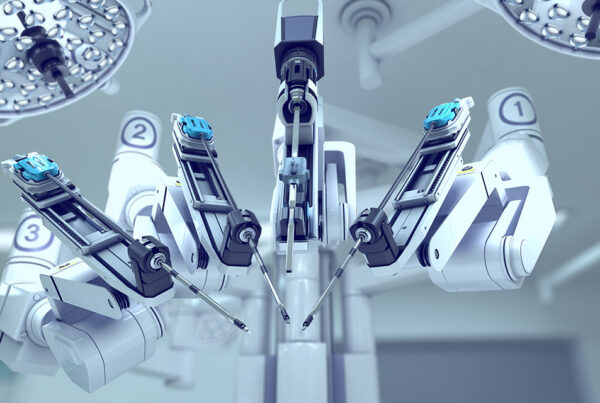By Guillaume Corpart
Robotic Assisted Surgery (RAS) equipment is considered some of the most advanced medical equipment to be launched in Latin America in the past decade. With over 200 RAS installed in Latin American hospitals, the segment generates over $100 M per year and is growing at over 20% per year.
But RAS systems are not for every institution. Acquiring a RAS is not only costly, but the process also requires institutions to meet specific infrastructure, technological, and training requirements. Not every institution can adopt technology at the same pace. Understanding the current technology installed in an institution is a key determinant in defining the institution’s ability to further adopt equipment.
Global Health Intelligence has been monitoring hospital infrastructure and installed base in Latin America since 2015, through HospiScope. Using data from HospiScope, we can map the penetration of critical equipment within hospitals. The TechTier Adoption Model helps medical device, equipment, and technology companies understand where a hospital sits on the technology adoption curve.
On a regional level, we observe eight technology adoption segments, ranging from Initiators to Global Leaders. The presence of specific equipment characterizes the level of technological advancement of each category. Simultaneously, we can observe that basic equipment (such as X-ray systems and Ultrasounds) is present in over 60% of hospitals, while more advanced and complex equipment (such as Linear accelerators, Gamma cameras, and Robotic surgery equipment) is present in less than 5% of institutions in the region.

Moving from one Tech Tier to another is a challenging and daunting task for hospital administrators. On the upstream, hospitals must conduct a thorough needs analysis to ensure demand will justify the acquisition of the equipment. Several leading manufacturers have been known to assist institutions in conducting demand analysis. On the downstream side, hospitals must ensure they have the necessary technological backbone, medical/technological training, as well as staff capabilities to lead to a successful adoption program. This latter analysis is often the more complex to assess and difficult to improve upon.

Variances exist and can be explored by drilling down on the country level, segmenting by public/ private institutions, and even by hospital size. Understanding the specifics of tech penetration along these axes can help you identify new potential targets and prioritize the efforts of your sales force to maximize results.
For further information on how HospiScope can help your business uncover opportunities within Latin America’s medical device and equipment sector, contact us to learn more.



